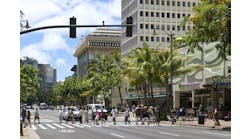The Governors Highway Safety Association (GHSA) recently issued a new report that analyzed data for the five-year period of 2015-2019 and found that traffic crash fatalities disproportionately affect Black, Indigenous and People of Color (BIPOC).
This study, An Analysis of Traffic Fatalities by Race and Ethnicity, is the first national analysis of this topic in more than a decade and identifies actions State Highway Safety Offices (SHSOs), communities, and their partners can take to advance just and equitable outcomes in traffic safety for all roadway users, regardless of race.
The GHSA data analysis found that:
- Compared with all other racial groups, American Indian/Alaskan Native persons had a substantially higher per-capita rate of total traffic fatalities. White, Native Hawaiian/Other Pacific Islander, Hispanic, and Asian persons had lower than average rates.
- American Indian/Alaskan Native persons had the highest per-capita rate of total traffic deaths, speeding-related fatalities, and pedestrian and bicyclist deaths.
- Black persons had the second highest rate of total traffic deaths, pedestrian traffic deaths, and bicyclist traffic deaths.
- Traffic fatality rates among white persons exceed those of BIPOC in motorcycle driver and passenger deaths.
“Our nation’s historic inequalities have contributed to an unacceptable imbalance in traffic safety,” GHSA Executive Director Jonathan Adkins said in a statement. “GHSA is focused on promoting racial justice and finding solutions that advance just results in the country’s behavioral highway safety programs. This problem didn’t happen overnight, and it won’t be fixed overnight—but we have to begin taking meaningful steps forward every day to make our roads safe for all people and communities.”
The report identifies actions states and communities can undertake when considering traffic enforcement, safety education and community outreach to better serve minority communities and reduce crashes, injuries and deaths for those who have been most affected by race-related disparities in transportation. One recommended action is to prioritize planning and investment in infrastructure safety countermeasures in underserved/lower socioeconomic communities and neighborhoods that have suffered from years of bias and disinvestment.
------------
SOURCE: Governors Highway Safety Association












